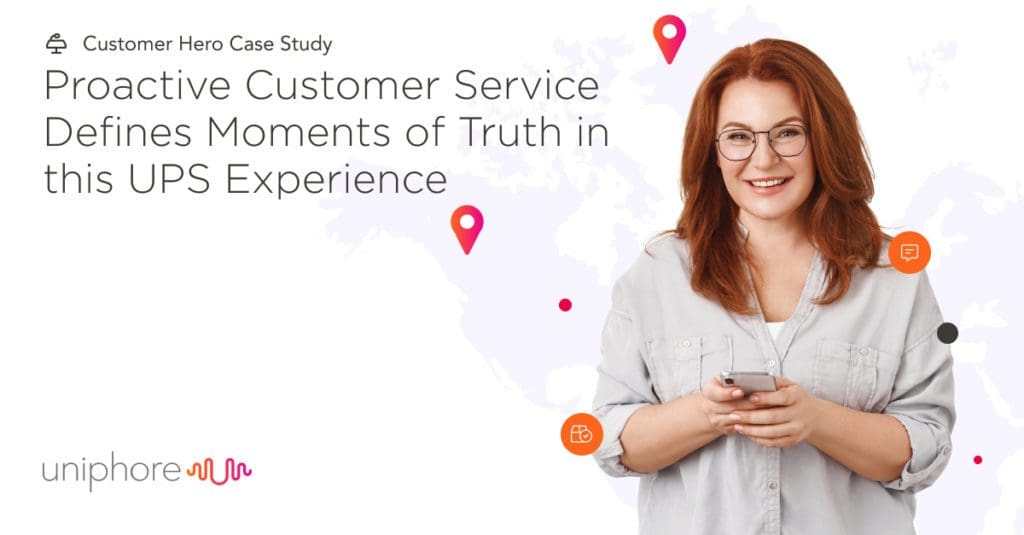
Solving the customer’s problem – before they are aware of it
A proactive approach to customer service may be more difficult to pull off, but it offers a wide array of benefits that should excite any enterprise.
There are, it could be said, only two types of customer service: the kind where you wait for customers to contact you via one of the many channels on offer, and the kind where your agents actively assist them before they have even asked for help. The first type is reactive customer service, while the latter is proactive.
The idea of proactive engagement – where your contact center is able to anticipate the what, when, where, and how related to customers’ challenges – is growing in acceptance, at least as an idea. Many companies might like the concept of proactively assisting customers, but far fewer understand how best to achieve this.
After all, it is not as if customer service agents don’t already seem to have enough on their plates. They already handle reactive contact with customers via a multitude of different channels, and if they are already juggling so many balls, how are they supposed to find the time to proactively assist customers as well?
The answers are not necessarily simple, but the benefits of proactive customer service are enormous. If you are able not just to meet, but actually exceed customer expectations, you will undoubtedly strengthen your relationship with clients, increasing loyalty, customer spends and quite likely gaining a significant amount of customer advocacy at the same time.
And let’s face it, customers hate the idea of chasing after you to find out information. The vast majority would be quite happy to be contacted proactively with regard to customer service issues. Many financial services entities already do so when it comes to the matter of potentially fraudulent activity on an account, and it is thus not a major step from this to assisting customers with a vast range of challenges, provided you are able to detect these early enough.
And with early detection comes the likelihood of your company catching problems before they escalate into the kind of massive, impossible-to-handle customer pain points that inevitably leave your reputation in tatters.
Reaching out to customers before they become annoyed not only reduces the impact of a potential problem, but it also leaves customers feeling as if your business is on-the-ball, considerate and thoughtful, while also reducing the time they would have had to spend contacting you if your service was only reactive. This enables them to see the value that your business is offering that much more rapidly.
Of course, to act proactively, you need to be able to understand the kind of situations where a customer will likely need your help before they even ask for it. There are numerous ways to gain such an understanding:
- You can ask customers for feedback, using surveys, feedback tabs on your website or simply interview them and ask how your product or service can be improved. Companies that frequently check in with their customers find it much easier to identify areas of weakness and correct them quickly.
- Review your customer service tickets and analyze the most common questions. Also, check your messages on Facebook and Twitter for feedback on products and services.
- Pay attention to what customers are saying online. Whenever your company is mentioned in a social media post – whether in a good or bad context – reach out to those people in order to learn the reasons behind the post, as this will enable you to better address customers’ needs.
Once you know what part of your service or product is causing the customers pain, you are in a much better position to step in when they are about to face a challenging problem.
Perhaps the ideal solution for proactive response is to implement some form of real-time monitoring of customers’ activity on your website. With this in place, you could quickly identify situations where, for example, a customer is going back and forth between two web pages, which is a good indication they are struggling to find something. Or a situation where a customer takes much longer on a page that they should be finished with inside a couple of minutes. In these instances, it would seem a simple matter to offer the customer the option of initiating a webchat with an agent.
Real-time monitoring itself can be mostly automated, using a customized set of triggers designed to identify a particular pattern. So there should be no concerns about having to have agents physically monitoring customers’ transactions all the time. These triggers will indicate when a webchat should be initiated, so agents can continue doing what they usually do until the trigger goes off.
There are other ways to be proactive too. As an example, perhaps your company finds itself in a position where a disaster of some kind puts it completely offline. This means that customers are unable to complete orders or find the information they are looking for. Being proactive would entail immediately issuing a statement about the problem on the various social media channels, ensuring that a status page is in place informing customers of the issue and possibly even sending an SMS to customers’ phones, to let them know what is going on.
Ultimately, the major difference between a proactive and reactive stance is that proactive customer support involves consistently keeping clients in the loop. Whether it is telling them about a disaster, explaining a challenge via a web chat or ensuring that instructions are available on your website to help them navigate common problems faced with a product, keeping customers informed offers incredible benefits to your organization.
Firstly, the customers themselves are drawn into viewing your business as one that cares; taking the initiative in terms of customer service keeps customers happy and thereby improves their loyalty to your brand.
Furthermore, a proactive approach should also lead to a decrease in support calls, which means it lessens the load on your agents, allowing them, in turn, to place more emphasis on individual chats or calls.
In addition, it gives you the opportunity to control better the narrative related to your business. While customers will talk about your brand to friends or family in private, they will also talk about your organization on the highly public channels that are social media platforms. By being proactive, you are able to insinuate yourself into the conversation more easily, enabling you to engage with them in a way that puts your company in a more favorable light.
Best of all, because proactive customer service is a big step up from a reactive approach, it goes beyond simply making your customers happy. Because you are solving their problems before they have asked for help – and possibly before they even knew they had a problem – you will be able to turn customers into genuine brand advocates, which is a powerful tool that can be used to help you drive your business forward.
[About the author]


